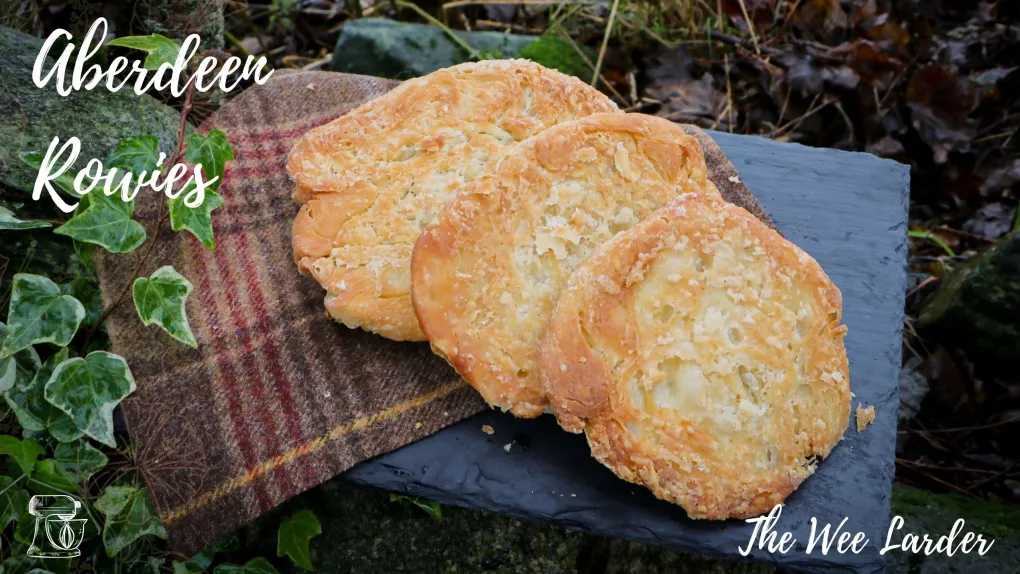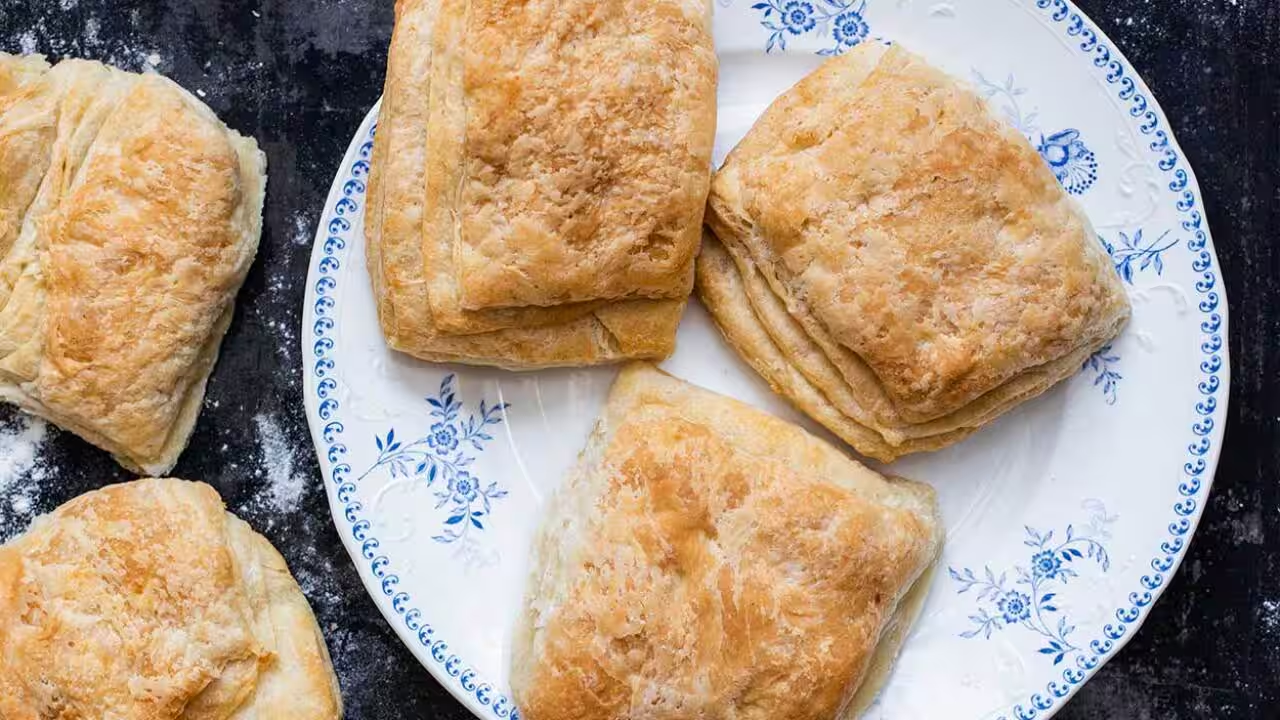From Aberdeen to Ottolenghi
- rosemary
- May 10
- 4 min read
"At first glance, a rowie looks a bit like an unfortunate croissant that you find in the bottom of your bag, crushed by a bag of apples or a stack of books." Regula Ysewijn/SBS


Above - a selection of butteries/rowies, at left Verena Lochmuller's Cheese and onion butteries from Comfort - the Ottolenghi team's latest book. In this case the team being Ottolenghi, his baking expert Verena Lochmuller, guest chef Helen Goh and writer Tara Wigley. This recipe belongs to Verena, and not even Jonathan Lovekin could make these butteries look totally amazing, but nevertheless I loved the idea and told myself they just looked a bit overcooked. I mean what's not to love about cheese, onion, and pastry. It's a winning combination however you do it.
The recipe, however, is sadly not online as yet, although Victoria Theng does a quick demonstration on her Style My Plate Instagram page - which is the link above. Below is one page of the double spread showing Verena Lochmuller making hers.

However, like all things Ottolenghi, it's not quite an authentic thing. "Cultural appreciation, not cultural appropriation" they say in the book's introdcution. But then the aim of Comfort is to simultaneously remember and recreate the dishes that evoke nostalgia and home, and yet incorporate the journeys the cooks have taken in their lives. Hence Verena's version is more cheffy than the originals and includes spring onions and cheese, and does not include lard, but nevertheless reminds her of the local butteries her mother bought from the campsite shop in Nairn, just east of Inverness, where the family used to go camping, when they lived in Scotland. Her version is savoury though rather than sweet - the originals are often eaten with jam.
But I see I am simultaneously starting at the beginning - the Ottolenghi recipe which I have determined to make some day - and the end - that journey from an original, traditional Scottish food, to the Ottolenghi Test Kitchen.
So where did it all actually begin? In Aberdeen it seems and at sea. Like cornish pasties which were originally designed as food to help the tin miners through their day, rowies - their original name were designed to keep the fisherman of this coastal town, energised and alive whilst at sea for weeks at a time. For they are full of fat - butter and lard - and flour - carbohydrates, and fats which would mean that the rowies would remain eatable and sustaining for a long time.
"They call them Rowies in Aberdeen town and Butteries in the countryside." The Wee Larder - or in the Scottish dialect:
‘The toonsers ca’ them rowies and the teuchters ca’ them butteries.’ The Guardian
The ingredients are flour, butter, lard, yeast, sugar and salt plus water to mix. And no they are not health food. Eat too many and you will die. Well earlier than most. It's food designed to give you strength and stamina whilst battling the sea. And so they are suitably 'rustic' to be polite, to look at, as the various different versions found in Aberdeen at the top of the page demonstrate. Appearance doesn't matter. The comfort of something fatty and filling is the aim.
But they are indeed made like croissants, or puff pastry which are posh - in that there is a lot of spreading of butter and lard and folding involved, as well as resting and chilling. So this is not fast food, which is probably why most people buy them rather than making them at home.

The downside of that is that mass production has apparently meant an increase in the use of palm oil, rather than butter and lard. Which led to the usual concern that Scottish heritage was being bastardised and lost. And so in 2018 there was a World Championship buttery contest - which this man Mark Barnett won - and again in 2014 after a COVID break. I'm not sure how genuinely 'world championship' it was, but this didn't matter to the organisers - Slow Food, Aberdeen City and Shire - whose aim was to revive interest in this local delicacy. Never mind that Sir - yes sir - Terry Wogan called it "a mouthful of seaweed" - general opinion seems to be that they are delicious.
But there are two kinds:
"There is the salty, slightly crisp variety and the soft, chewy ones. You usually have to go to different bakers to find each type. The difference comes down to the method of making them. For the crispy variety some of the fat is left in small lumps rather than working it in completely, which causes the lumps to effectively fry the surrounding dough. The secret is to know when to stop working the dough, which apparently is an art as slightly too much will create a flat cake instead of a slightly risen buttery." We Are Not Foodies/Curious Foodies
Another comment on technique - apologies but I'm not sure who it was from now - is:
"To make rowies you have to push the butter and lard mixture into the dough with your fingertips, just like the Italians do with olive oil while making focaccia. This process ensures that the rowies become soft rather than crisp."
And Verena Lochmuller was certainly doing this right at the end of her process. And yet, hers look crispy.
So to end, some examples if you feel like having a go on a day when you have lots of time: Aberdeen rowies - The Wee Larder; Aberdeen butteries - Our So Called Life; Aberdeen buttery rowie - Regula Ysewijn/SBS and Aberdeen butteries - Rowies - Delightful Repast whose author says:
"For some reason, the tradition when serving is to spread the butter (if you really think it needs more butter!) and jam (yes, please!) on the flat bottom of the buttery."
And yes they all look different.
YEARS GONE BY
May 10
2024 - Knish - Jewish pasties - coincidence?
2022 - Nothing
2021 - Nothing
2020 - Deleted
2018 - Mascarpone - not sweet
2017 - Coronation chicken









They all look different and delicious...... But, but are they not bad for you, all that butter is surely bad for your heart? Willing to try one! 😅